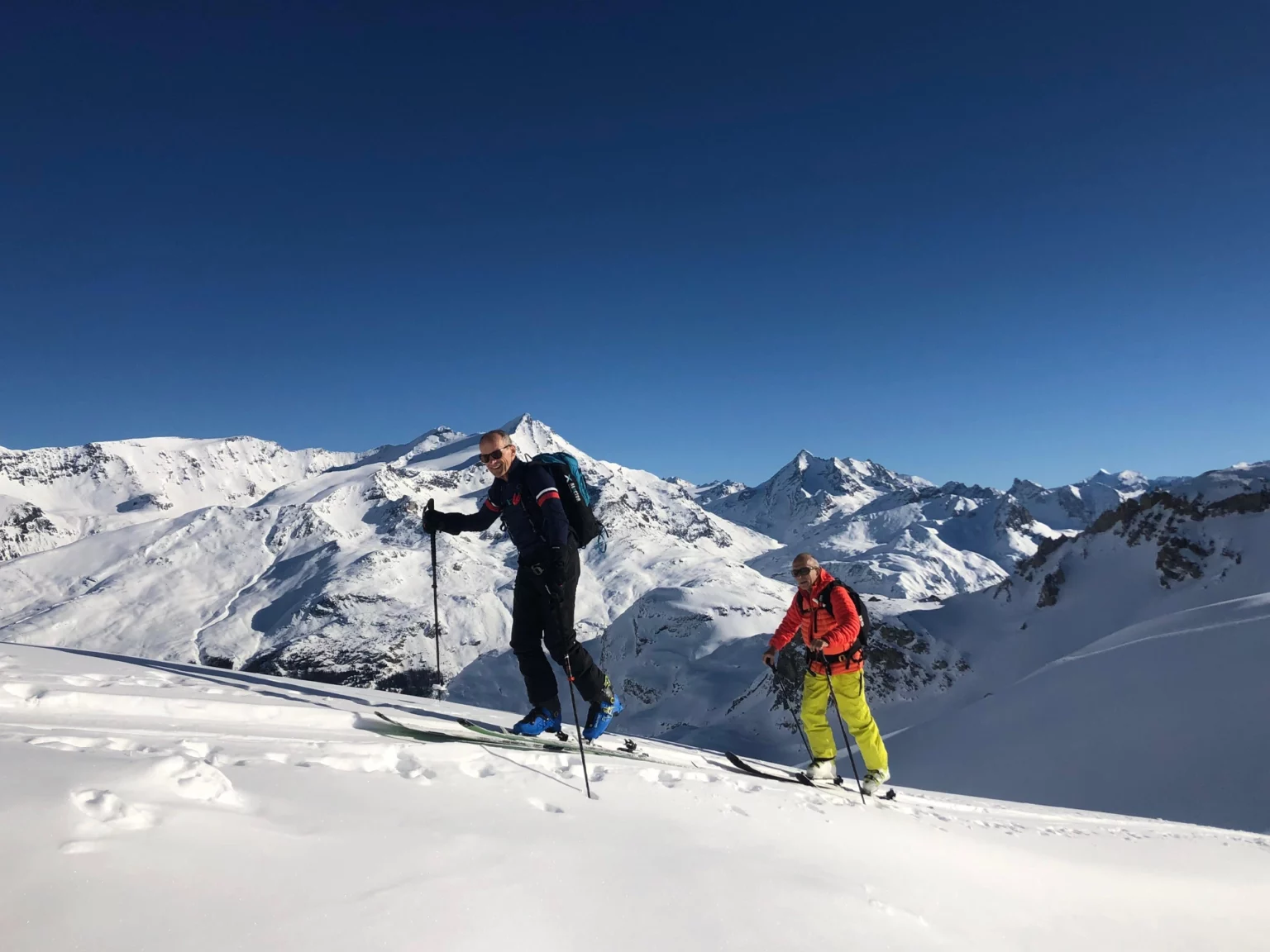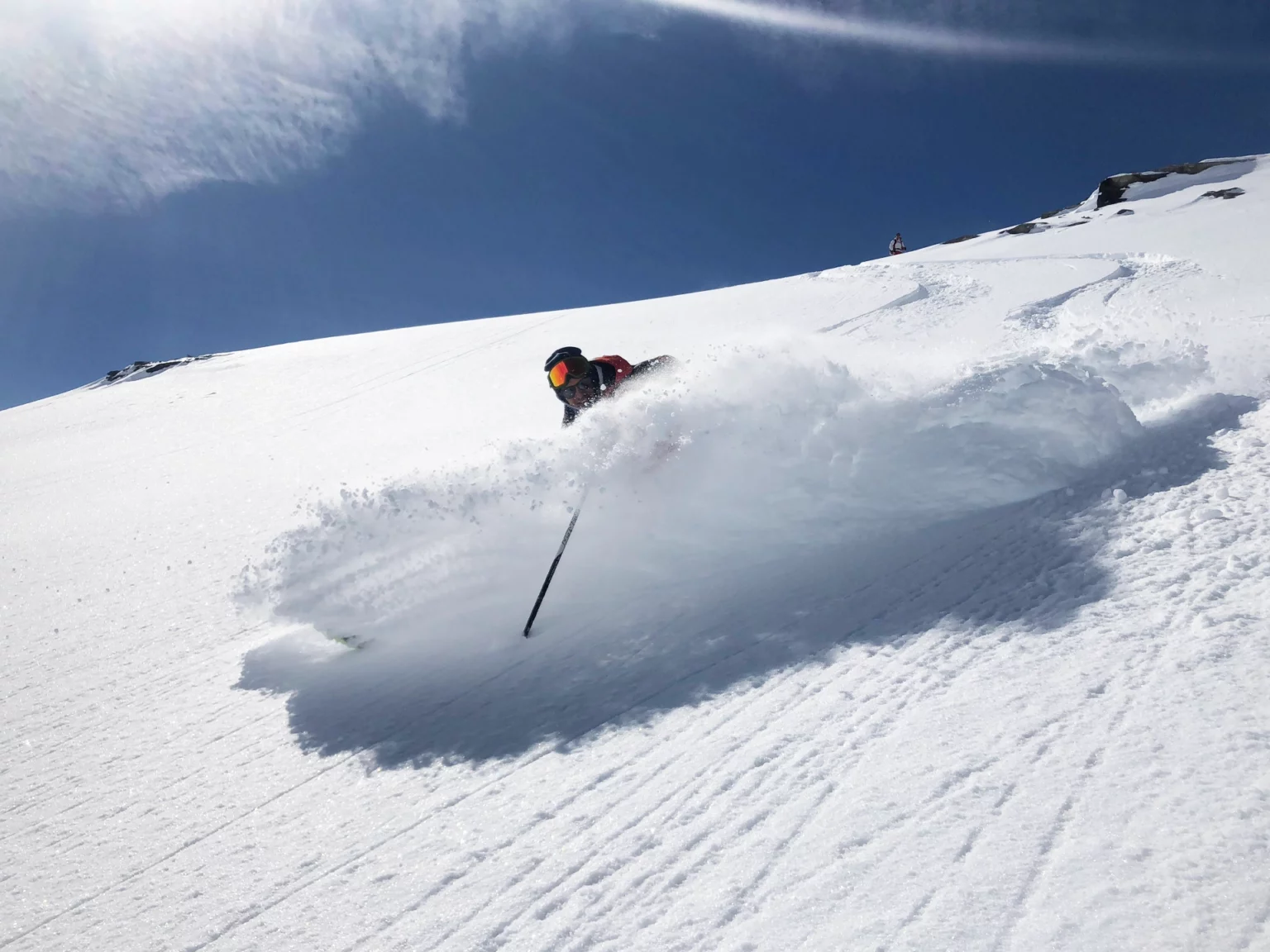Physical and technical level required
Depending on the activity you want to do, here are the details of the physical and technical levels required.
Levels according to practices
This off-piste activity is easily adaptable to your level of skiing or snowboarding. The guide chooses the slopes according to your physical and technical level after a short evaluation run.
Nevertheless, being able to ski down black runs is a prerequisite, as it demonstrates a minimum of technical ability!
For the technical and physical assessment, we suggest you refer to the explanations below:
Technical
- Level 1 : If you're a beginner, you'll be discovering the equipment and how to use it, or you're not very familiar with it.
- Level 2: You're already an expert, you know how to use the equipment independently, and you're capable of climbing +/- 500m of positive ascent on gentle slopes (up to 20°).
- Level 3: You're a regular hiker, and climbing in sealskin on slopes of 25° to 35°, on slippery snow (spring snow refrozen in the morning, hard snow, slopes without marked tracks) is feasible. On the way down, 35° to 40° is manageable. Crampons may be necessary.
- Level 4: You will be completely autonomous and at ease in all types of snow, on both ascents and descents, on slopes of 35° to 40° on the ascent and 45° on the descent. Crampons are often very useful, and should be easy to use.
- Level 5 : You're a great skier, and you're good at slopes of 45° to 65°! You've mastered the use of all equipment to perfection, including mountaineering gear (ice axe, crampons, abseiling).
Physics
- Level 1 : Be able to make an effort over a few hours + cover 500m of ascent
- Level 2: Hikes of 800-1000m ascent, speed: 300-400m+/hour
- Level 3: Do 1000-1500m of positive ascent, for runners this could be compared to a half-marathon. Speed: +/- 500m+/hour
- Level 4: Do 1500-2500m positive in a day, speed 600-700m+/hour
For the experts, an ice climbing grading system is used (below); for the others, a level grid is suggested.
Degree
- 1 : Ice walk with crampons.
- 2 : A 60° pitch, short steep steps, good quality ice, good protection and good belays.
- 3 : Ice at 70/80° thick ice. Steep sections, but good rests and good protection and belays.
- 4 : Ice at 75/80° between good belays, with a steep or vertical section, good protection and belays.
- 5 : A more serious route on good ice, requiring a certain technical ease. 90° ice on 10-20m sections
- 6 : A very sustained length, with few rest points and hanging belays. Less good protection. A high level of technique is essential. 90° ice over 30-50m, or overhanging ice on 5-10m sections.
- 7 : A vertical length of thin ice or poor cohesion. Protection difficult or impossible. Expert only. Overhanging ice over large sections, more than 20m, long vertical sections.
Grades
- I : Short climb, protected belays, easy descent. No commitment, no objective danger.
- II : One or two pitches, few objective dangers or on short sections of the route. Abseiling down.
- III : Several pitches or a long approach requiring a good knowledge of winter travel. Objective danger on much of the route.
- IV : Objective hazards during the approach or ascent. Long descent or obligation to continue to exit.
- V : Long climb on a high mountain face requiring a good level of skill and commitment. Difficult descent, uncertain retreat.
- VI : A long route on an alpine face that can only be climbed in a day by the best climbers. Logistical problems linked to winter conditions, altitude and remoteness.
- VII : Grade VI, but with such scope and continuity that the route justifies an additional grade.
For beginners:
Technical level
- Level 1 : you're a beginner.
- Level 2: you've already done some ice climbing, you've tackled icy faces at 60-75°, and you're starting to get the hang of using ice axes and crampons, even if you're still wearing zip ties!
- Level 3: you start to feel comfortable with the equipment, you are able to climb sections of 20-30m at 80/85°.
- Level 4: You're perfectly at ease with ice axes in your hands and crampons on your feet! You're managing your effort well and doing 90° sections is starting to become commonplace for you.
- Level 5 : Climbing walls with long vertical or sloping sections is normal, pulling on your arms as if you were at the gym has become second nature - you've mutated from a mere human to a chimpanzee!
Physical level
This level shows whether you can manage both the ascent of a waterfall and the approach to it from the car park.
- Level 1 : Short approach, gentle climb.
- Level 2: Short approach (less than 30min), climbing starting to pull on the arms (80/85°)
- Level 3: Approach of 1 to 2 hours with 300-500m+ of approach on foot, snowshoes or skis depending on conditions and location.
- Level 4: Approach beginning to be long or complex (2-4h) with 500-800m+ to do. Sustained ice climbing, steep passages requiring physical stamina to conserve enough energy to continue climbing.
- Level 5 : A very long approach and/or ice climbing on really steep and sustained waterfalls... You're a good all-rounder!
Technical
- Level 1 : You're a beginner, you've got a lot to explore. However, you love the effort and having extraordinary sensations is what attracts you.
- Level 2: You've already climbed rocky ridges with little taper. You've used crampons and ice axes without them getting in the way.
- Level 3: Being on snow and ice slopes of 30-40° seems easy. You push your way along rocky and snowy ridges as if you were on a pavement! You're in the 5 degree climbing range.
- Level 4: You can handle all types of terrain, both during the ascent and on the approach (steep grassy slopes, rocky terrain, snow or ice). You're looking for more technically challenging routes. Climbing in the 6th climbing degree or 5th in ice is natural.
- Level 5 : Riding over complicated, unstable terrain that is complex to protect and sustained over long stretches is "almost second nature". Even the approaches can be technically challenging.
Physics :
- Level 1 : You do short hikes (less than 500m) and you climb slowly (less than 300m/h).
- Level 2: You can do 500 to 1000m hikes over 5-10km, at a speed of 400-500m/h.
- Level 3: Ascent of 1000-1500m per day, 10 to 20km, speed 500-600m/h
- Level 4: Long gradients, more than 2000m per day, long efforts that continue throughout the day.
- Level 5 : A very long race, in terms of the altitude difference covered on the way up to the refuge or bivouac, during the race and on the way down to the car park. The alarm goes off very early in the morning, and the race can last all day and finish very late.
A few images



Do you have any questions?
Contact us and we'll get back to you as soon as possible.
- 06 95 86 85 75
- bureaudesguidesdetignes@gmail.com

